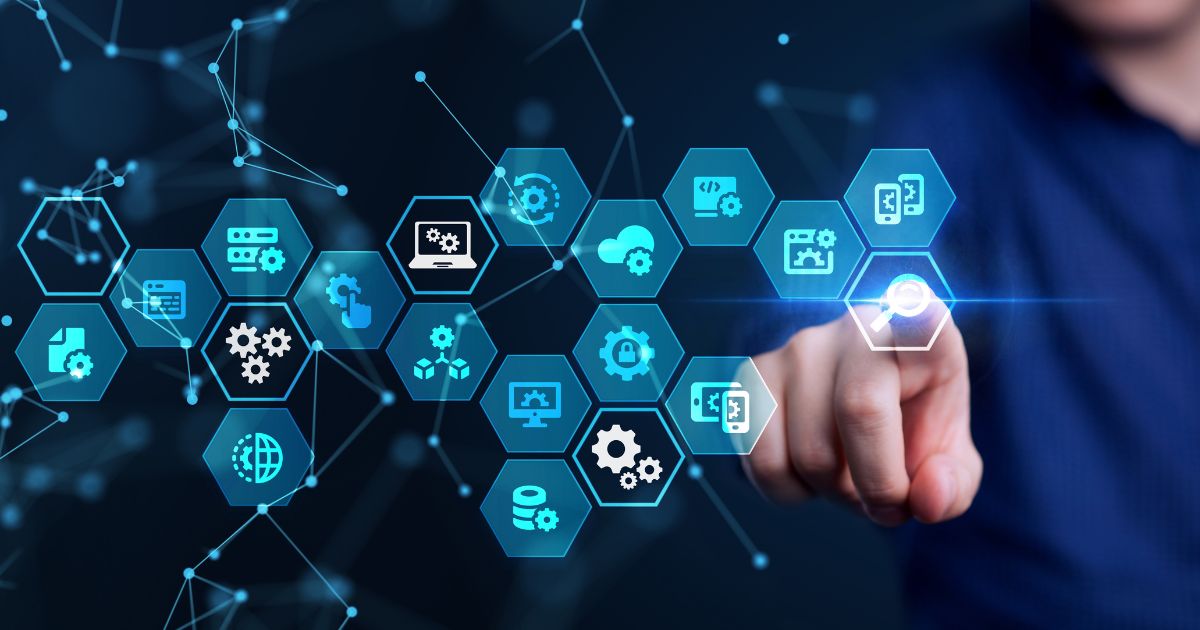
In today’s digital age, governments around the world are embracing digital transformation to provide faster, more efficient services to their citizens. Hyperautomation is a revolutionary technology that is transforming the way governments operate, by streamlining processes and improving efficiency. Hyperautomation involves the use of advanced technologies such as Artificial Intelligence (AI), Robotic Process Automation (RPA), and Machine Learning (ML) to automate repetitive tasks, reduce errors, and improve overall productivity. By implementing hyperautomation in eGovernment, governments can improve their services, reduce costs, and provide better citizen experiences. This article explores the power of hyperautomation in eGovernment, its benefits, and how it can transform the way governments operate in the digital age.
Understanding hyperautomation and its benefits
Hyperautomation is a combination of technologies that automate complex and repetitive tasks. It involves the use of AI, RPA, and ML to automate processes, reduce errors, and improve overall productivity. Hyperautomation can be used to automate various processes in eGovernment, including document processing, data entry, and customer service. By automating these processes, governments can reduce the time and cost involved in delivering services to citizens.
Hyperautomation has several benefits for eGovernment. First, it can reduce the workload of government employees, enabling them to focus on more important tasks. Second, it can improve the accuracy and speed of processes, reducing errors and delays. Third, it can improve the overall citizen experience by providing faster and more efficient services. Finally, hyperautomation can reduce costs for governments by automating processes and reducing the need for manual labor.
The current state of eGovernment processes
Government agencies around the world are increasingly adopting digital technologies to provide better services to their citizens. However, many governments still rely on traditional, paper-based processes for many tasks. These processes are often slow, inefficient, and error-prone, leading to delays and frustration for citizens. In addition, these processes can be expensive for governments, requiring significant resources to manage and maintain.
The COVID-19 pandemic has highlighted the importance of digital transformation for eGovernment. With many citizens unable to visit government offices in person, governments have had to find new ways to deliver services online. This has led to a significant increase in the adoption of digital technologies, including hyperautomation.
The role of hyperautomation in eGovernment
Hyperautomation has the potential to transform the way governments operate. By automating repetitive tasks and streamlining processes, hyperautomation can enable governments to provide faster, more efficient services to citizens. Hyperautomation can be used to automate various processes in eGovernment, including document processing, data entry, and customer service.
Hyperautomation can also be used to improve the accuracy and speed of processes, reducing errors and delays. For example, hyperautomation can be used to automatically extract data from documents, reducing the time and cost involved in manual data entry. In addition, hyperautomation can improve the overall citizen experience by providing faster and more efficient services.
Case studies of hyperautomation in eGovernment
Several governments around the world have already implemented hyperautomation in their eGovernment processes. For example, the Australian government has implemented RPA to automate several processes, including processing of visa applications, processing of student loan applications, and processing of tax returns. The use of RPA has enabled the Australian government to reduce processing times and improve accuracy, resulting in better citizen experiences.
Another example is the government of Estonia, which has implemented a digital identity system that uses AI to authenticate citizens. The system enables citizens to access government services online, reducing the need for in-person visits to government offices. The use of AI has also enabled the Estonian government to improve the accuracy and speed of processes, resulting in better citizen experiences.
The impact of hyperautomation on citizens and government agencies
Hyperautomation can have a significant impact on both citizens and government agencies. For citizens, hyperautomation can result in faster and more efficient services. By automating processes and reducing the need for manual labor, hyperautomation can reduce processing times, resulting in faster turnaround times for services. In addition, hyperautomation can improve the accuracy of processes, reducing errors and delays.
For government agencies, hyperautomation can result in reduced costs and improved productivity. By automating processes, governments can reduce the need for manual labor, resulting in cost savings. In addition, hyperautomation can improve the accuracy and speed of processes, reducing errors and delays and improving overall productivity.
Considerations when implementing hyperautomation in eGovernment
When implementing hyperautomation in eGovernment, there are several considerations that governments should keep in mind. First, governments should identify the processes that are most suitable for automation. Processes that are repetitive and involve a lot of manual labor are the most suitable for automation. Second, governments should ensure that the technology they choose is compatible with their existing systems. Third, governments should ensure that they have the necessary skills and expertise to implement and maintain the technology.
Best practices for successful implementation
To ensure successful implementation of hyperautomation in eGovernment, governments should follow best practices. These include identifying the processes that are most suitable for automation, ensuring compatibility with existing systems, and ensuring that they have the necessary skills and expertise to implement and maintain the technology. In addition, governments should involve all stakeholders in the implementation process, including citizens, employees, and external partners.
Future of eGovernment with hyperautomation
The future of eGovernment is bright with hyperautomation. Hyperautomation has the potential to transform the way governments operate, enabling them to provide faster, more efficient services to citizens. As technology continues to evolve, we can expect to see even more advanced forms of hyperautomation, including the use of advanced AI and ML algorithms.
Conclusion
Hyperautomation has the potential to revolutionize eGovernment, enabling governments to provide faster, more efficient services to citizens. By automating processes and reducing the need for manual labor, hyperautomation can improve accuracy, reduce costs, and provide better citizen experiences. Governments that embrace hyperautomation will be better equipped to meet the needs of their citizens in the digital age.
Written by Daniele Paoletti
